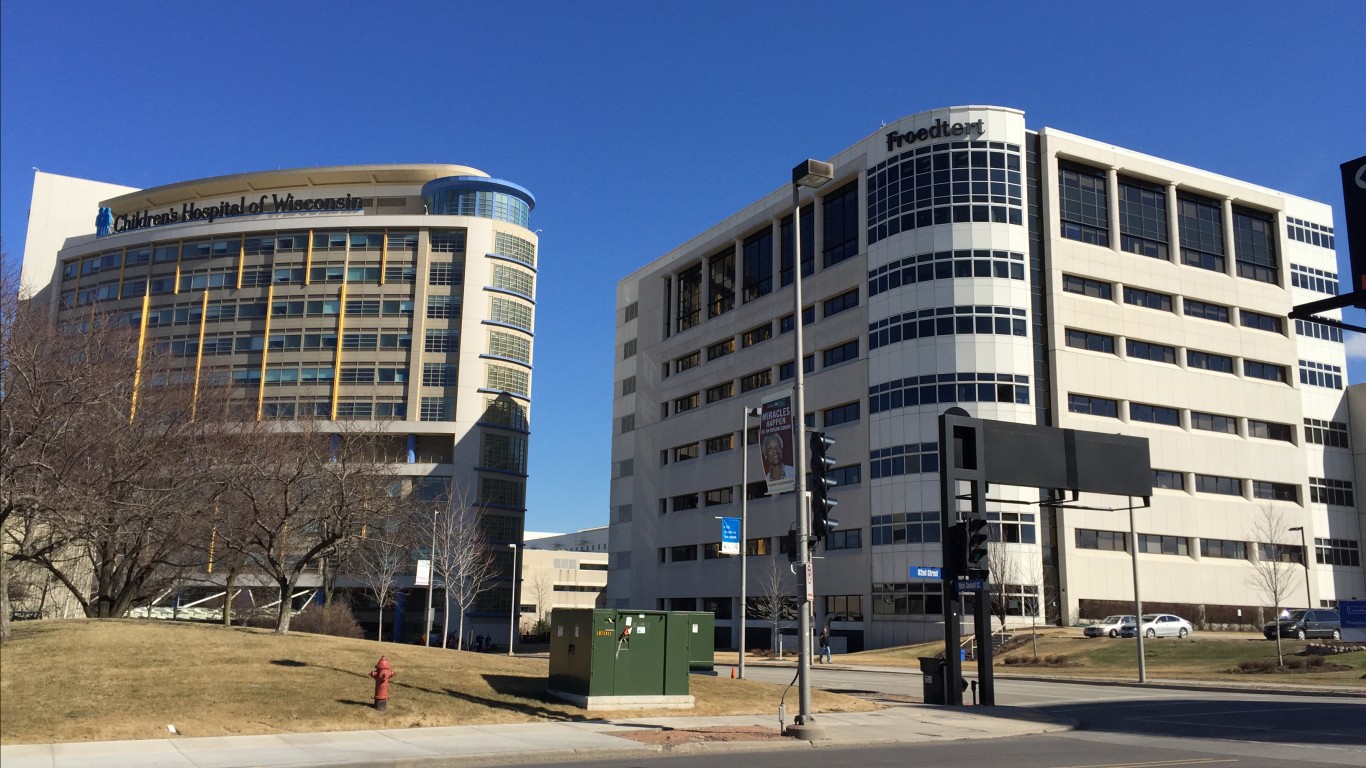
Respiratory illnesses that brought people to their health care providers rose to a near-record at the end of November last year – higher than most recent flu seasons, and especially high for that time of the year. Since then, flu and flu-like illnesses have remained high but continue to decline in most areas, according to weekly data published by the Centers for Disease and Control and Prevention.
Respiratory symptoms including fever, cough, and sore throat were reported in 5.4% of visits to health care providers during the week ending Dec. 31, 2022, down from the 7.5% peak in November, but still higher than the worst weeks of the 2021-22 and 2018-2019 flu seasons.
Multiple respiratory viruses, including influenza, but also SARS-CoV-2 (the virus that causes COVID-19), and respiratory syncytial virus (RSV), are co-circulating. (See how COVID fatality rates compare with other diseases.)
According to estimates from the CDC, there have been as many as 22 million illnesses, 230,000 hospitalizations, and 14,000 deaths from flu so far this season. (These are the worst epidemics and pandemics in history.)
The five states with the highest incidence of flu-like illness last week all reported rates of 6% or greater: New Mexico (12.5%), Maine (7.5%), and Massachusetts, Nebraska, and Colorado (7.1% each). New York City, which is among the non-state jurisdictions tracked by the CDC, had an incidence of flu-like illness of 9%.
How bad is the flu season in every state?
Click here to see our detailed methodology

Alabama
> Flu-like illness activity level: High
> Flu-like symptoms in week ending Dec 31: 4.2% of 45,509 patients
> Flu activity baseline during offseason for Region 4: 3.1% of patients
> 65 and over population: 17.6% (23rd highest)
> 5 and under population: 5.8% (18th highest)
[in-text-ad]

Alaska
> Flu-like illness activity level: Minimal
> Flu-like symptoms in week ending Dec 31: 2.6% of 4,008 patients
> Flu activity baseline during offseason for Region 10: 1.8% of patients
> 65 and over population: 13.4% (4th lowest)
> 5 and under population: 6.3% (6th highest)

Arizona
> Flu-like illness activity level: Moderate
> Flu-like symptoms in week ending Dec 31: 3.8% of 21,492 patients
> Flu activity baseline during offseason for Region 9: 2.4% of patients
> 65 and over population: 18.3% (13th highest)
> 5 and under population: 5.5% (21st lowest)

Arkansas
> Flu-like illness activity level: High
> Flu-like symptoms in week ending Dec 31: 4.5% of 14,208 patients
> Flu activity baseline during offseason for Region 6: 3.9% of patients
> 65 and over population: 17.4% (26th highest)
> 5 and under population: 5.9% (13th highest)
[in-text-ad-2]
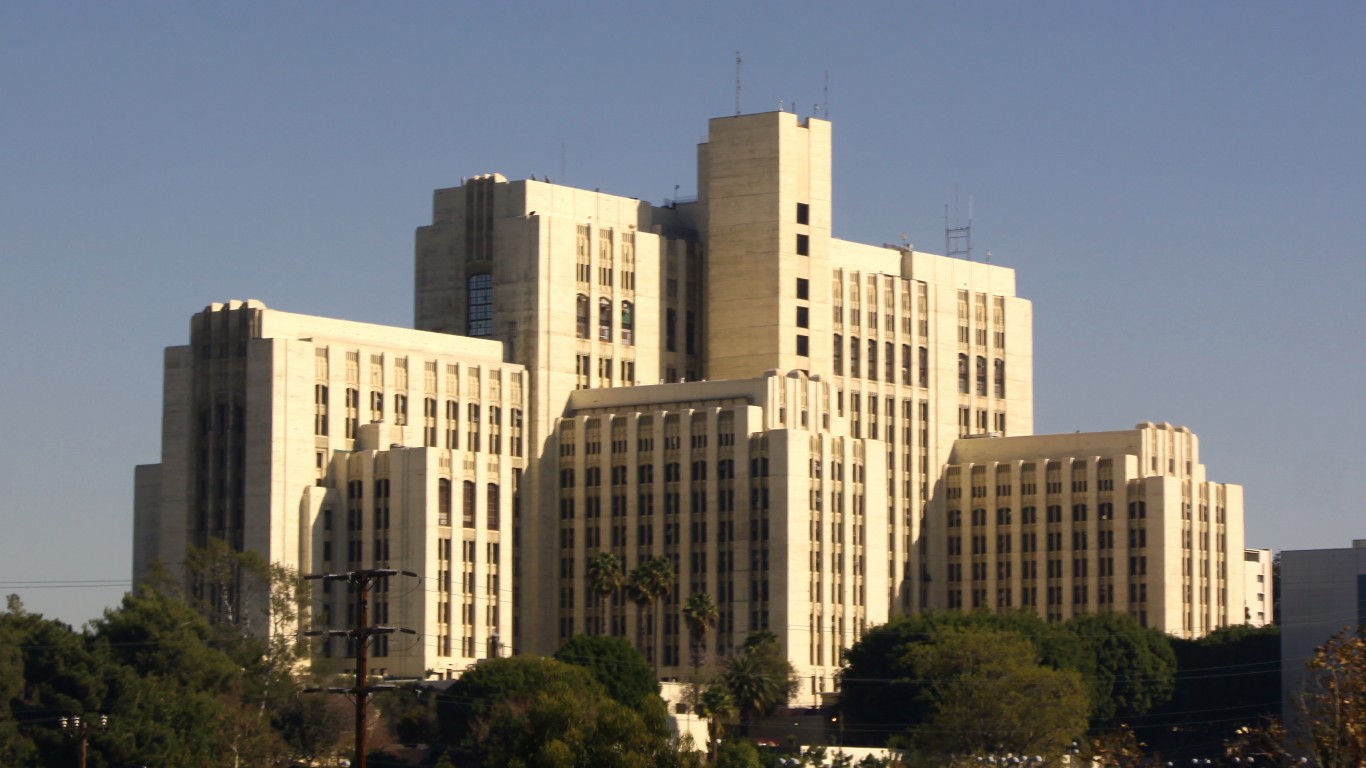
California
> Flu-like illness activity level: Very High
> Flu-like symptoms in week ending Dec 31: 6.7% of 214,763 patients
> Flu activity baseline during offseason for Region 9: 2.4% of patients
> 65 and over population: 15.2% (7th lowest)
> 5 and under population: 5.6% (25th highest)

Colorado
> Flu-like illness activity level: Very High
> Flu-like symptoms in week ending Dec 31: 7.1% of 43,792 patients
> Flu activity baseline during offseason for Region 8: 2.8% of patients
> 65 and over population: 15.1% (6th lowest)
> 5 and under population: 5.3% (14th lowest)
[in-text-ad]

Connecticut
> Flu-like illness activity level: High
> Flu-like symptoms in week ending Dec 31: 5.1% of 44,328 patients
> Flu activity baseline during offseason for Region 1: 2.0% of patients
> 65 and over population: 18.0% (16th highest)
> 5 and under population: 4.9% (5th lowest)

Delaware
> Flu-like illness activity level: Moderate
> Flu-like symptoms in week ending Dec 31: 3.1% of 9,854 patients
> Flu activity baseline during offseason for Region 3: 2.1% of patients
> 65 and over population: 20.1% (5th highest)
> 5 and under population: 5.3% (13th lowest)

District of Columbia
> Flu-like illness activity level: High
> Flu-like symptoms in week ending Dec 31: 5.4% of 3,955 patients
> Flu activity baseline during offseason for Region 3: 2.1% of patients
> 65 and over population: 12.8% (2nd lowest)
> 5 and under population: 6.1% (8th highest)
[in-text-ad-2]

Florida
> Flu-like illness activity level: High
> Flu-like symptoms in week ending Dec 31: 6.4% of 255,523 patients
> Flu activity baseline during offseason for Region 4: 3.1% of patients
> 65 and over population: 21.1% (2nd highest)
> 5 and under population: 5.0% (9th lowest)
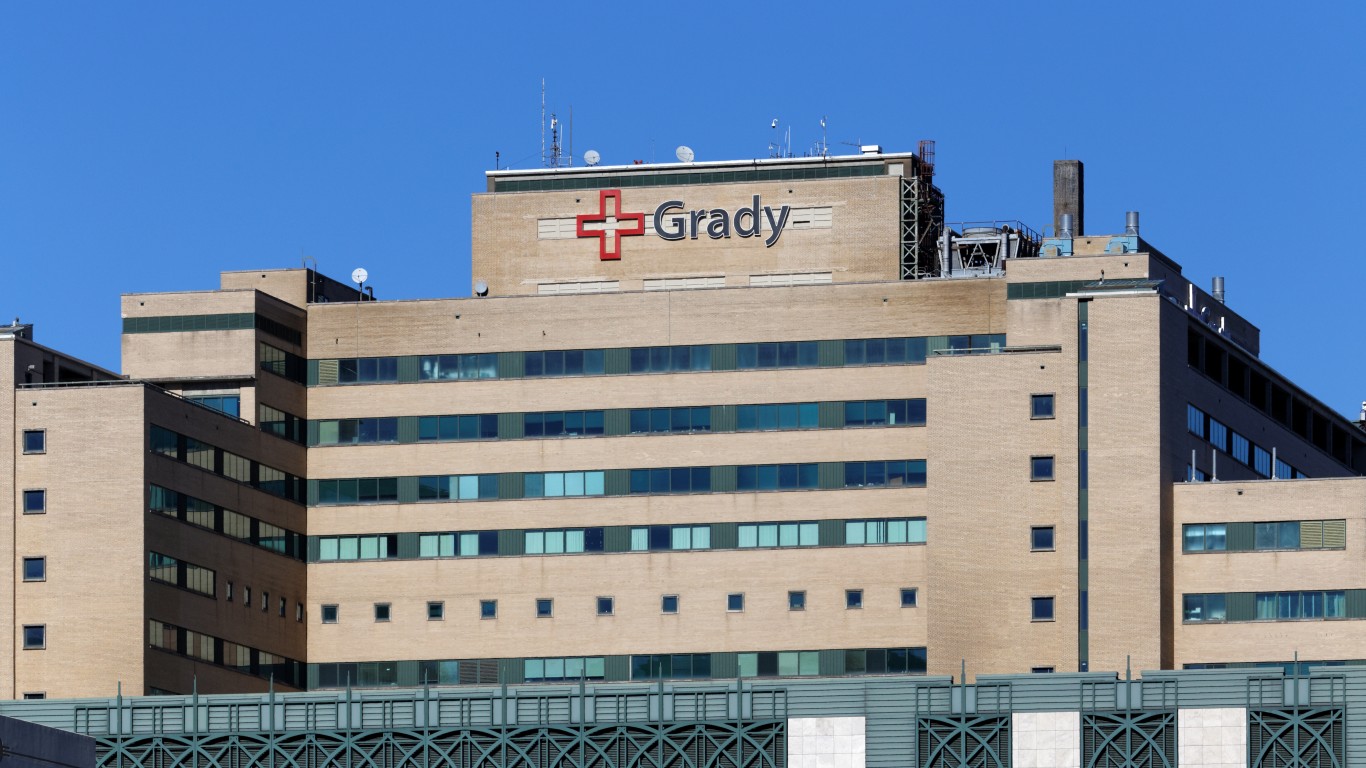
Georgia
> Flu-like illness activity level: High
> Flu-like symptoms in week ending Dec 31: 4.6% of 72,169 patients
> Flu activity baseline during offseason for Region 4: 3.1% of patients
> 65 and over population: 14.7% (5th lowest)
> 5 and under population: 5.8% (16th highest)
[in-text-ad]

Hawaii
> Flu-like illness activity level: Low
> Flu-like symptoms in week ending Dec 31: 3.6% of 1,315 patients
> Flu activity baseline during offseason for Region 9: 2.4% of patients
> 65 and over population: 19.6% (7th highest)
> 5 and under population: 5.6% (24th highest)
Idaho
> Flu-like illness activity level: High
> Flu-like symptoms in week ending Dec 31: 5.1% of 10,099 patients
> Flu activity baseline during offseason for Region 10: 1.8% of patients
> 65 and over population: 16.5% (15th lowest)
> 5 and under population: 5.9% (12th highest)
Illinois
> Flu-like illness activity level: Moderate
> Flu-like symptoms in week ending Dec 31: 3.0% of 64,651 patients
> Flu activity baseline during offseason for Region 5: 2.5% of patients
> 65 and over population: 16.6% (18th lowest)
> 5 and under population: 5.6% (22nd lowest)
[in-text-ad-2]

Indiana
> Flu-like illness activity level: High
> Flu-like symptoms in week ending Dec 31: 4.4% of 53,801 patients
> Flu activity baseline during offseason for Region 5: 2.5% of patients
> 65 and over population: 16.4% (13th lowest)
> 5 and under population: 6.0% (11th highest)
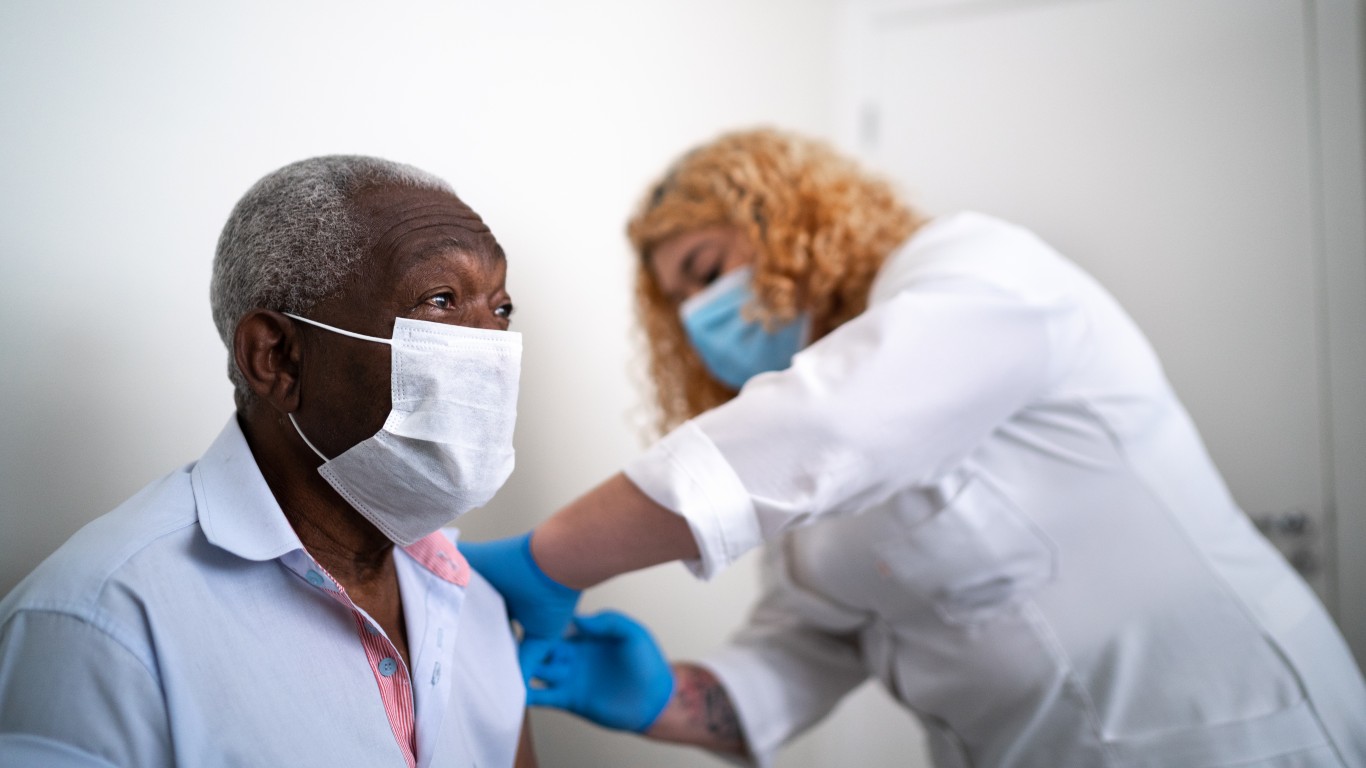
Iowa
> Flu-like illness activity level: High
> Flu-like symptoms in week ending Dec 31: 4.8% of 2,684 patients
> Flu activity baseline during offseason for Region 7: 1.8% of patients
> 65 and over population: 17.8% (20th highest)
> 5 and under population: 5.9% (15th highest)
[in-text-ad]

Kansas
> Flu-like illness activity level: High
> Flu-like symptoms in week ending Dec 31: 3.9% of 15,190 patients
> Flu activity baseline during offseason for Region 7: 1.8% of patients
> 65 and over population: 16.7% (19th lowest)
> 5 and under population: 6.1% (10th highest)

Kentucky
> Flu-like illness activity level: High
> Flu-like symptoms in week ending Dec 31: 4.3% of 31,698 patients
> Flu activity baseline during offseason for Region 4: 3.1% of patients
> 65 and over population: 17.0% (25th lowest)
> 5 and under population: 5.7% (19th highest)

Louisiana
> Flu-like illness activity level: High
> Flu-like symptoms in week ending Dec 31: 3.8% of 44,365 patients
> Flu activity baseline during offseason for Region 6: 3.9% of patients
> 65 and over population: 16.6% (17th lowest)
> 5 and under population: 6.1% (7th highest)
[in-text-ad-2]

Maine
> Flu-like illness activity level: Very High
> Flu-like symptoms in week ending Dec 31: 7.5% of 14,712 patients
> Flu activity baseline during offseason for Region 1: 2.0% of patients
> 65 and over population: 21.7% (the highest)
> 5 and under population: 4.4% (2nd lowest)

Maryland
> Flu-like illness activity level: High
> Flu-like symptoms in week ending Dec 31: 4.3% of 38,051 patients
> Flu activity baseline during offseason for Region 3: 2.1% of patients
> 65 and over population: 16.3% (12th lowest)
> 5 and under population: 5.7% (22nd highest)
[in-text-ad]
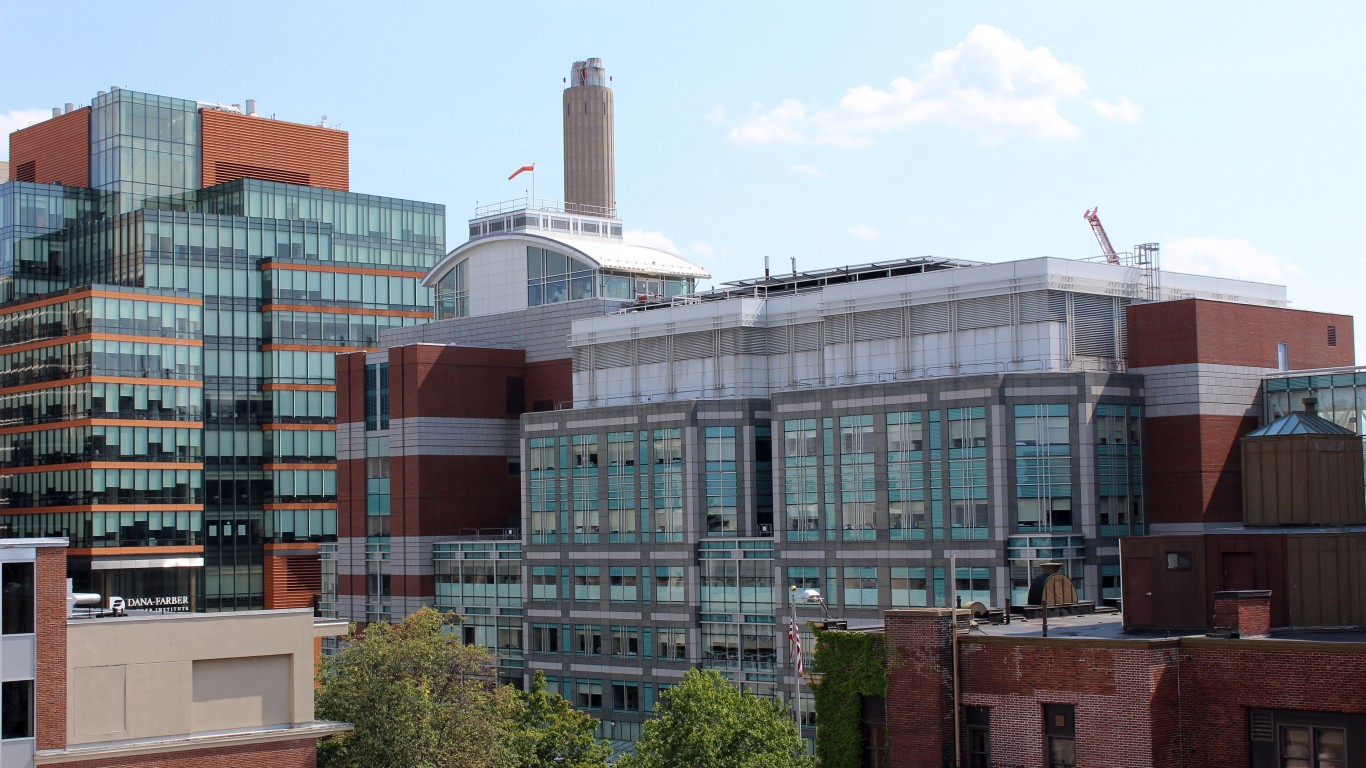
Massachusetts
> Flu-like illness activity level: Very High
> Flu-like symptoms in week ending Dec 31: 7.1% of 74,015 patients
> Flu activity baseline during offseason for Region 1: 2.0% of patients
> 65 and over population: 17.4% (25th highest)
> 5 and under population: 5.0% (7th lowest)
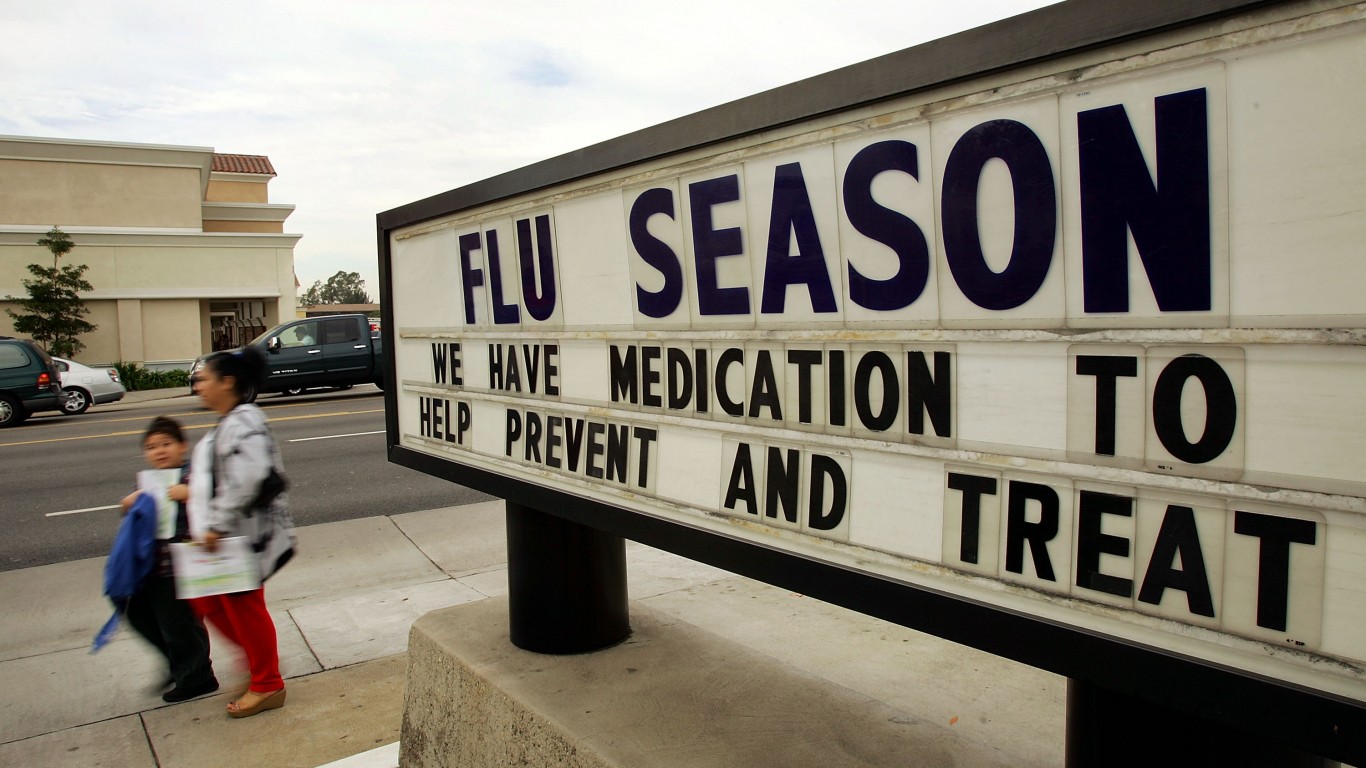
Michigan
> Flu-like illness activity level: Moderate
> Flu-like symptoms in week ending Dec 31: 3.3% of 85,193 patients
> Flu activity baseline during offseason for Region 5: 2.5% of patients
> 65 and over population: 18.1% (15th highest)
> 5 and under population: 5.4% (17th lowest)

Minnesota
> Flu-like illness activity level: Minimal
> Flu-like symptoms in week ending Dec 31: 2.5% of 24,449 patients
> Flu activity baseline during offseason for Region 5: 2.5% of patients
> 65 and over population: 16.8% (20th lowest)
> 5 and under population: 5.8% (17th highest)
[in-text-ad-2]
Mississippi
> Flu-like illness activity level: Very High
> Flu-like symptoms in week ending Dec 31: 6.6% of 7,517 patients
> Flu activity baseline during offseason for Region 4: 3.1% of patients
> 65 and over population: 16.8% (21st lowest)
> 5 and under population: 5.9% (14th highest)

Missouri
> Flu-like illness activity level: High
> Flu-like symptoms in week ending Dec 31: 3.7% of 28,473 patients
> Flu activity baseline during offseason for Region 7: 1.8% of patients
> 65 and over population: 17.6% (22nd highest)
> 5 and under population: 5.7% (20th highest)
[in-text-ad]

Montana
> Flu-like illness activity level: High
> Flu-like symptoms in week ending Dec 31: 4.2% of 6,480 patients
> Flu activity baseline during offseason for Region 8: 2.8% of patients
> 65 and over population: 19.7% (6th highest)
> 5 and under population: 5.1% (10th lowest)

Nebraska
> Flu-like illness activity level: Very High
> Flu-like symptoms in week ending Dec 31: 7.1% of 14,135 patients
> Flu activity baseline during offseason for Region 7: 1.8% of patients
> 65 and over population: 16.4% (14th lowest)
> 5 and under population: 6.3% (5th highest)

Nevada
> Flu-like illness activity level: Moderate
> Flu-like symptoms in week ending Dec 31: 3.3% of 10,210 patients
> Flu activity baseline during offseason for Region 9: 2.4% of patients
> 65 and over population: 16.5% (16th lowest)
> 5 and under population: 5.6% (26th highest)
[in-text-ad-2]
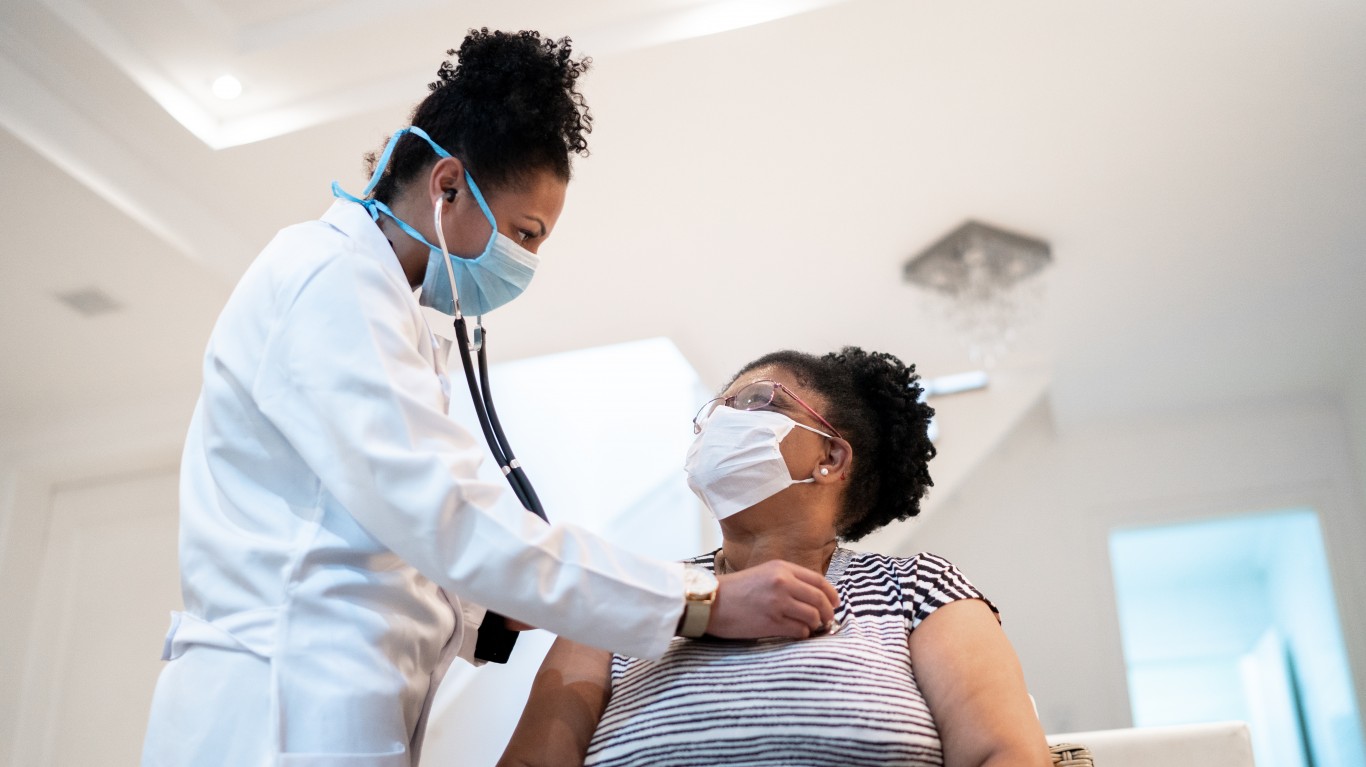
New Hampshire
> Flu-like illness activity level: Minimal
> Flu-like symptoms in week ending Dec 31: 1.0% of 508 patients
> Flu activity baseline during offseason for Region 1: 2.0% of patients
> 65 and over population: 19.3% (8th highest)
> 5 and under population: 4.5% (3rd lowest)

New Jersey
> Flu-like illness activity level: High
> Flu-like symptoms in week ending Dec 31: 6.2% of 27,007 patients
> Flu activity baseline during offseason for Region 2: 3.4% of patients
> 65 and over population: 16.9% (22nd lowest)
> 5 and under population: 5.6% (24th lowest)
[in-text-ad]

New Mexico
> Flu-like illness activity level: Very High
> Flu-like symptoms in week ending Dec 31: 12.5% of 20,636 patients
> Flu activity baseline during offseason for Region 6: 3.9% of patients
> 65 and over population: 18.5% (12th highest)
> 5 and under population: 5.4% (18th lowest)
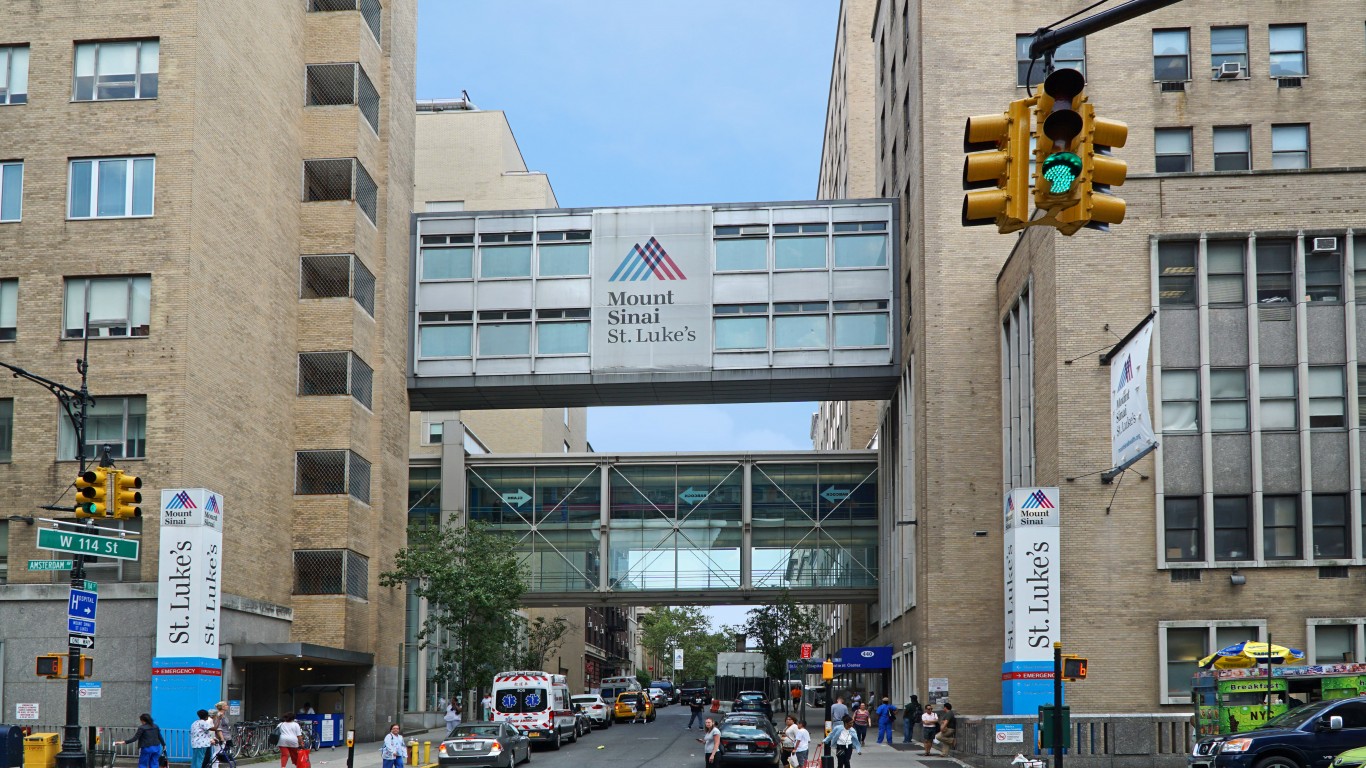
New York
> Flu-like illness activity level: Very High
> Flu-like symptoms in week ending Dec 31: 5.4% of 57,591 patients
> Flu activity baseline during offseason for Region 2: 3.4% of patients
> 65 and over population: 17.5% (24th highest)
> 5 and under population: 5.5% (19th lowest)

North Carolina
> Flu-like illness activity level: High
> Flu-like symptoms in week ending Dec 31: 4.3% of 84,789 patients
> Flu activity baseline during offseason for Region 4: 3.1% of patients
> 65 and over population: 17.0% (24th lowest)
> 5 and under population: 5.5% (20th lowest)
[in-text-ad-2]

North Dakota
> Flu-like illness activity level: High
> Flu-like symptoms in week ending Dec 31: 5.2% of 3,234 patients
> Flu activity baseline during offseason for Region 8: 2.8% of patients
> 65 and over population: 16.0% (8th lowest)
> 5 and under population: 6.6% (2nd highest)

Ohio
> Flu-like illness activity level: High
> Flu-like symptoms in week ending Dec 31: 6.9% of 35,049 patients
> Flu activity baseline during offseason for Region 5: 2.5% of patients
> 65 and over population: 17.8% (19th highest)
> 5 and under population: 5.7% (23rd highest)
[in-text-ad]

Oklahoma
> Flu-like illness activity level: High
> Flu-like symptoms in week ending Dec 31: 5.7% of 23,137 patients
> Flu activity baseline during offseason for Region 6: 3.9% of patients
> 65 and over population: 16.2% (10th lowest)
> 5 and under population: 6.1% (9th highest)
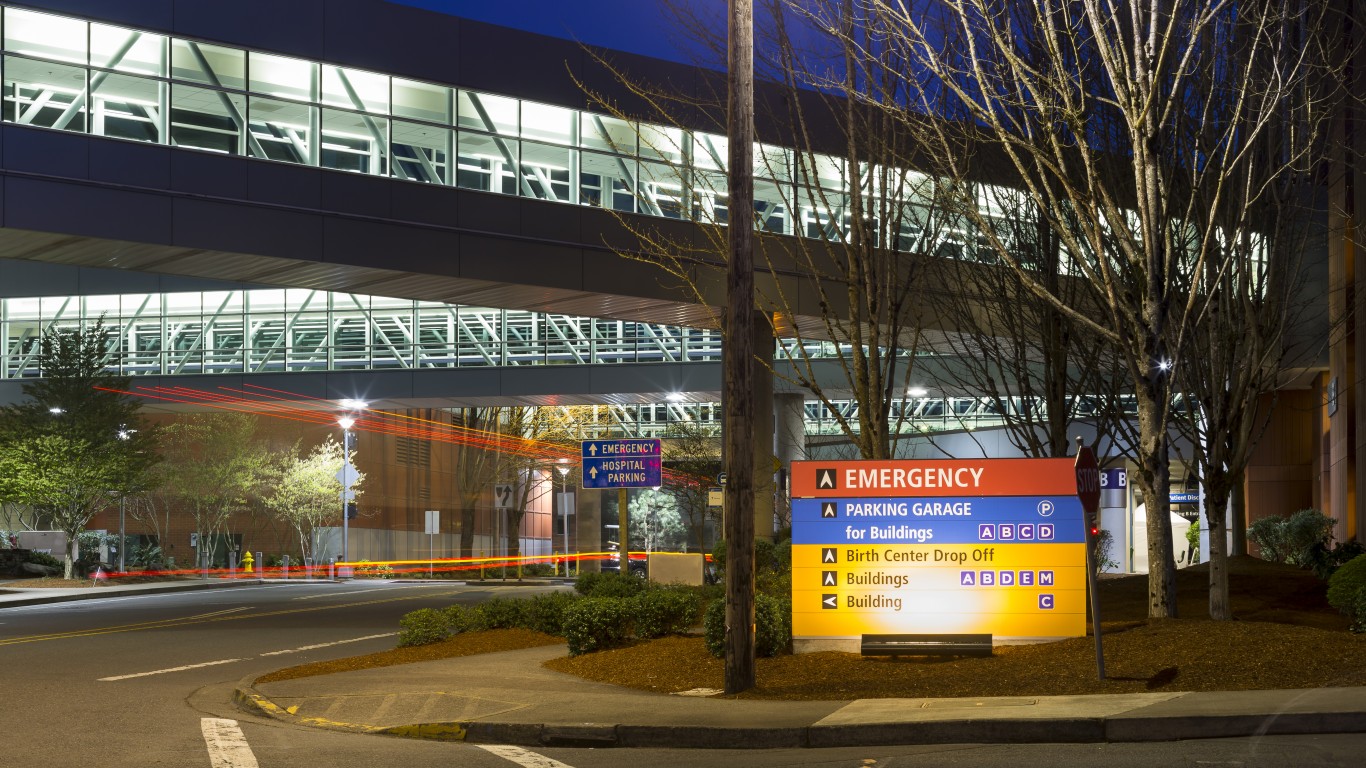
Oregon
> Flu-like illness activity level: Moderate
> Flu-like symptoms in week ending Dec 31: 3.0% of 40,294 patients
> Flu activity baseline during offseason for Region 10: 1.8% of patients
> 65 and over population: 18.6% (11th highest)
> 5 and under population: 5.0% (6th lowest)

Pennsylvania
> Flu-like illness activity level: High
> Flu-like symptoms in week ending Dec 31: 3.3% of 64,647 patients
> Flu activity baseline during offseason for Region 3: 2.1% of patients
> 65 and over population: 19.0% (9th highest)
> 5 and under population: 5.2% (12th lowest)
[in-text-ad-2]

Rhode Island
> Flu-like illness activity level: Very High
> Flu-like symptoms in week ending Dec 31: 5.0% of 10,831 patients
> Flu activity baseline during offseason for Region 1: 2.0% of patients
> 65 and over population: 18.3% (14th highest)
> 5 and under population: 4.8% (4th lowest)

South Carolina
> Flu-like illness activity level: Very High
> Flu-like symptoms in week ending Dec 31: 6.0% of 28,546 patients
> Flu activity baseline during offseason for Region 4: 3.1% of patients
> 65 and over population: 18.6% (10th highest)
> 5 and under population: 5.3% (15th lowest)
[in-text-ad]
South Dakota
> Flu-like illness activity level: Low
> Flu-like symptoms in week ending Dec 31: 1.9% of 7,284 patients
> Flu activity baseline during offseason for Region 8: 2.8% of patients
> 65 and over population: 17.6% (21st highest)
> 5 and under population: 6.5% (3rd highest)

Tennessee
> Flu-like illness activity level: High
> Flu-like symptoms in week ending Dec 31: 5.5% of 32,378 patients
> Flu activity baseline during offseason for Region 4: 3.1% of patients
> 65 and over population: 17.0% (23rd lowest)
> 5 and under population: 5.7% (21st highest)

Texas
> Flu-like illness activity level: Very High
> Flu-like symptoms in week ending Dec 31: 6.5% of 58,216 patients
> Flu activity baseline during offseason for Region 6: 3.9% of patients
> 65 and over population: 13.2% (3rd lowest)
> 5 and under population: 6.4% (4th highest)
[in-text-ad-2]

Utah
> Flu-like illness activity level: High
> Flu-like symptoms in week ending Dec 31: 5.3% of 18,078 patients
> Flu activity baseline during offseason for Region 8: 2.8% of patients
> 65 and over population: 11.6% (the lowest)
> 5 and under population: 7.0% (the highest)

Vermont
> Flu-like illness activity level: High
> Flu-like symptoms in week ending Dec 31: 3.8% of 5,175 patients
> Flu activity baseline during offseason for Region 1: 2.0% of patients
> 65 and over population: 20.6% (4th highest)
> 5 and under population: 4.2% (the lowest)
[in-text-ad]

Virginia
> Flu-like illness activity level: High
> Flu-like symptoms in week ending Dec 31: 5.3% of 25,059 patients
> Flu activity baseline during offseason for Region 3: 2.1% of patients
> 65 and over population: 16.3% (11th lowest)
> 5 and under population: 5.6% (23rd lowest)

Washington
> Flu-like illness activity level: High
> Flu-like symptoms in week ending Dec 31: 4.8% of 41,138 patients
> Flu activity baseline during offseason for Region 10: 1.8% of patients
> 65 and over population: 16.2% (9th lowest)
> 5 and under population: 5.6% (25th lowest)

West Virginia
> Flu-like illness activity level: Low
> Flu-like symptoms in week ending Dec 31: 2.8% of 8,523 patients
> Flu activity baseline during offseason for Region 3: 2.1% of patients
> 65 and over population: 20.7% (3rd highest)
> 5 and under population: 5.0% (8th lowest)
[in-text-ad-2]
Wisconsin
> Flu-like illness activity level: Moderate
> Flu-like symptoms in week ending Dec 31: 2.8% of 17,797 patients
> Flu activity baseline during offseason for Region 5: 2.5% of patients
> 65 and over population: 17.9% (18th highest)
> 5 and under population: 5.3% (16th lowest)
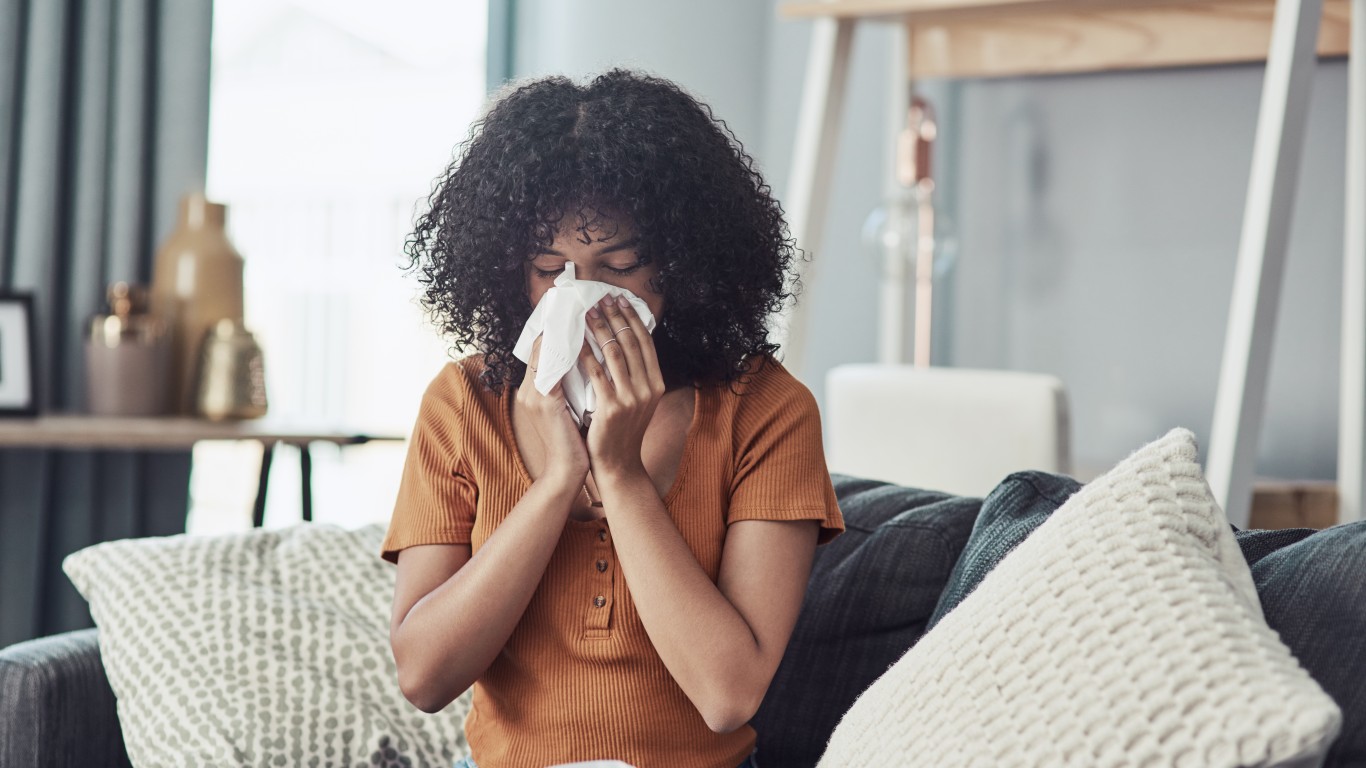
Wyoming
> Flu-like illness activity level: Moderate
> Flu-like symptoms in week ending Dec 31: 3.7% of 1,565 patients
> Flu activity baseline during offseason for Region 8: 2.8% of patients
> 65 and over population: 17.9% (17th highest)
> 5 and under population: 5.2% (11th lowest)
Methodology
To identify the incidence of the flu in every state, 24/7 Tempo reviewed the percentage of outpatient visits with flu-like illnesses (ILI) during the week ending December 31, 2022, from the latest weekly influenza surveillance report prepared by the influenza division of the CDC.
ILI activity levels – minimal, low, moderate, and high – are based on the difference between current and off-season average proportions of outpatient visits to health providers for flu-like illnesses. These off-season baselines range from 1.1% of patients in the Seattle region (Idaho, Oregon, and Washington) to 3.1% in the New York region (New Jersey and New York). States with high activity levels are those where flu cases have exceeded the respective baseline the most.
ILI includes hospital visits for respiratory conditions such as fever plus a cough or sore throat, not laboratory-confirmed influenza. Regional baselines used by the CDC are the average percent of patient visits for ILI during non-influenza weeks for the previous three seasons plus two standard deviations.
It is important to note that outbreaks occurring in a single city can cause a state to display high activity levels, and data collected may disproportionately represent certain populations within a state and therefore may not accurately capture influenza activity for the whole state.
Populations used to compute the percentage of ILI cases for the 65 and over and 5 and under age groups are from the U.S. Census Bureau’s 2021 American Community Survey.
Cash Back Credit Cards Have Never Been This Good
Credit card companies are at war, handing out free rewards and benefits to win the best customers. A good cash back card can be worth thousands of dollars a year in free money, not to mention other perks like travel, insurance, and access to fancy lounges. See our top picks for the best credit cards today. You won’t want to miss some of these offers.
Flywheel Publishing has partnered with CardRatings for our coverage of credit card products. Flywheel Publishing and CardRatings may receive a commission from card issuers.
Thank you for reading! Have some feedback for us?
Contact the 24/7 Wall St. editorial team.


 24/7 Wall St.
24/7 Wall St.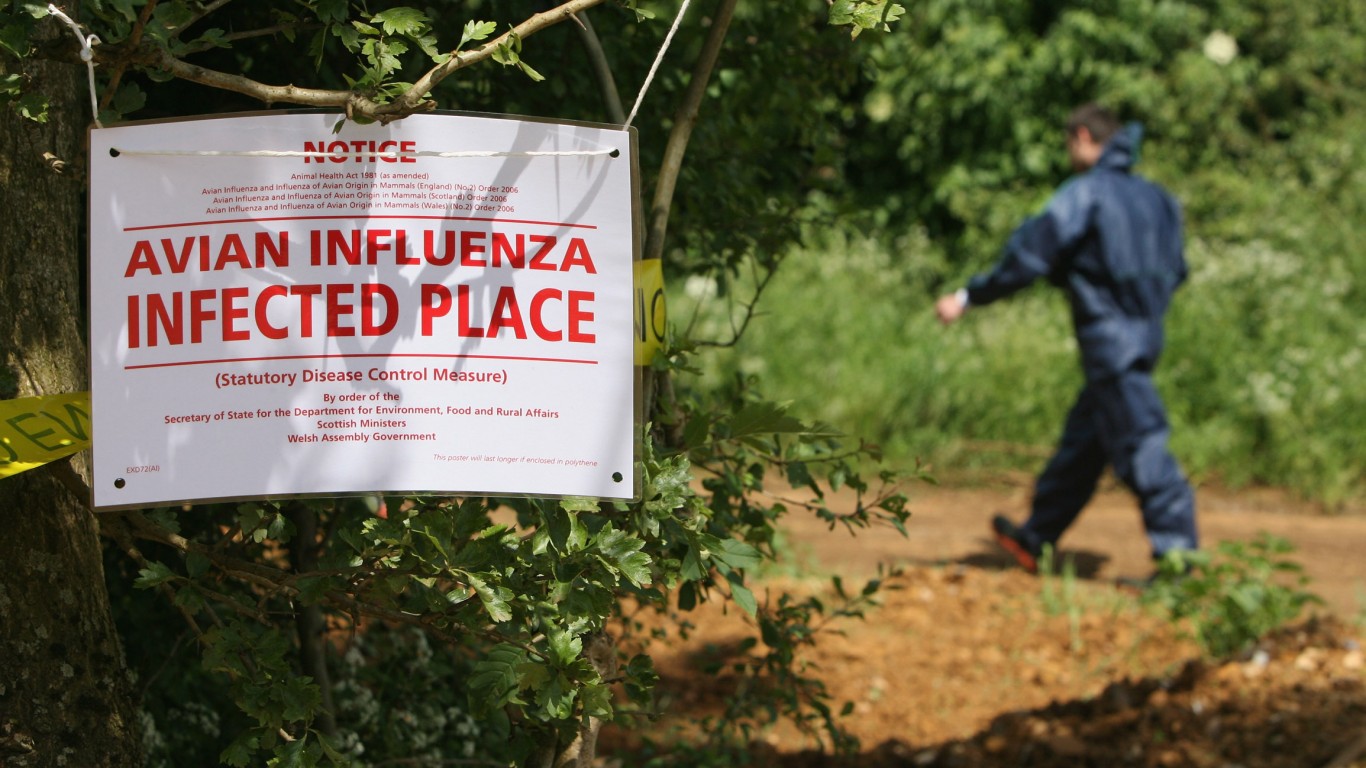 24/7 Wall St.
24/7 Wall St.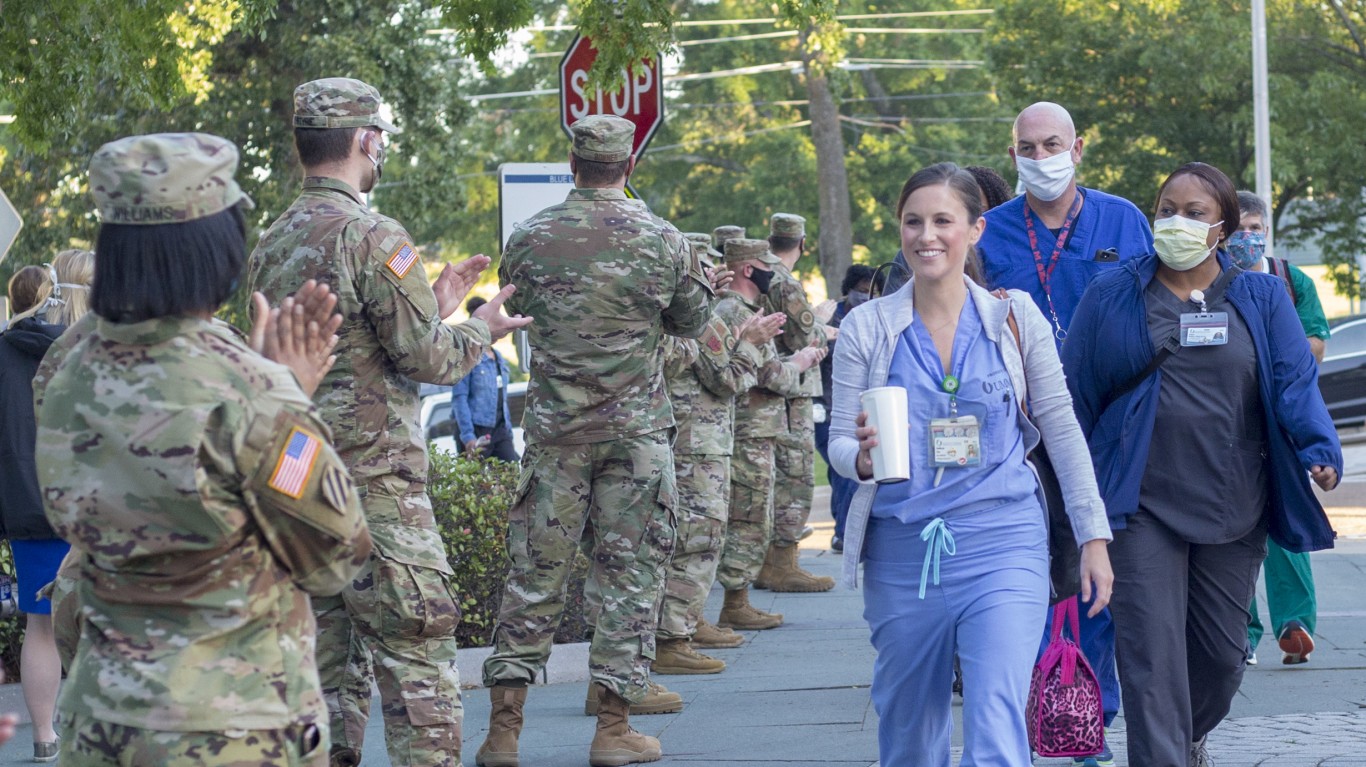
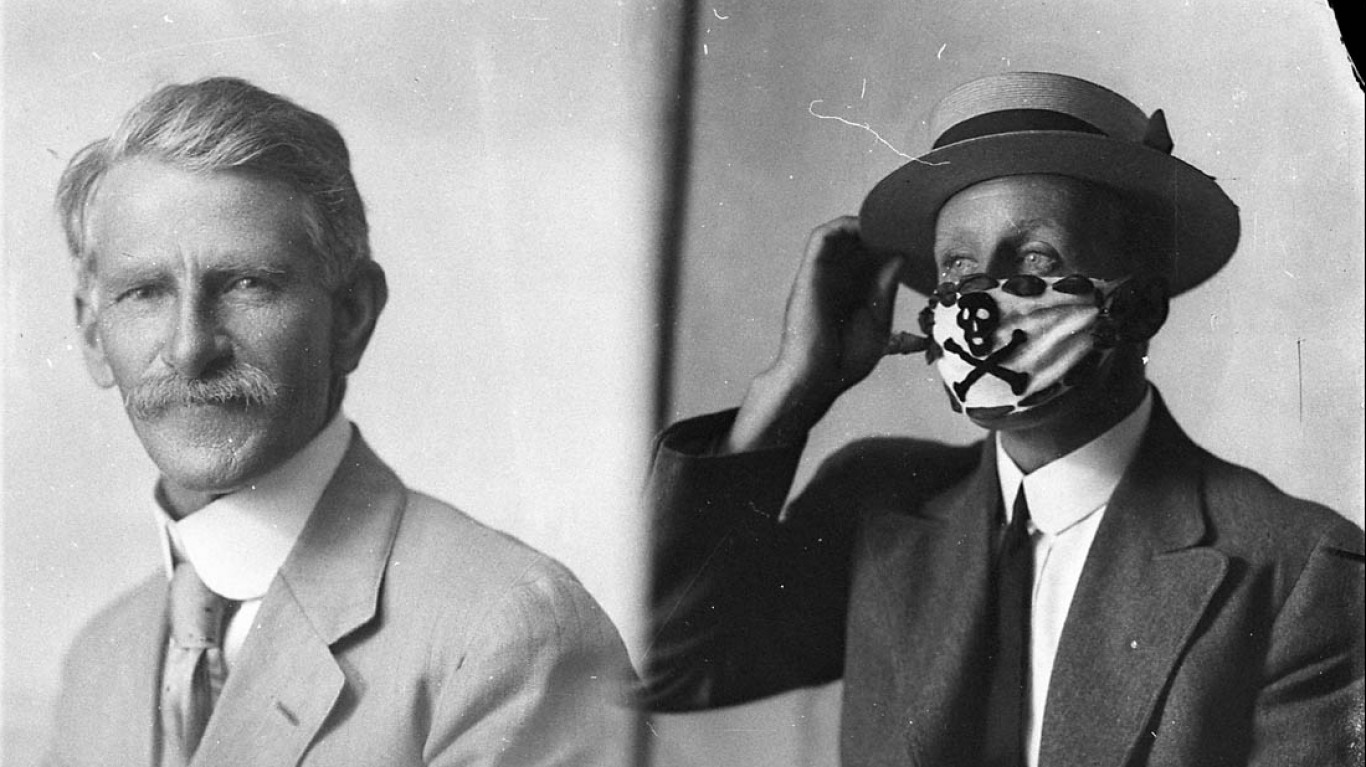 24/7 Wall St.
24/7 Wall St.
